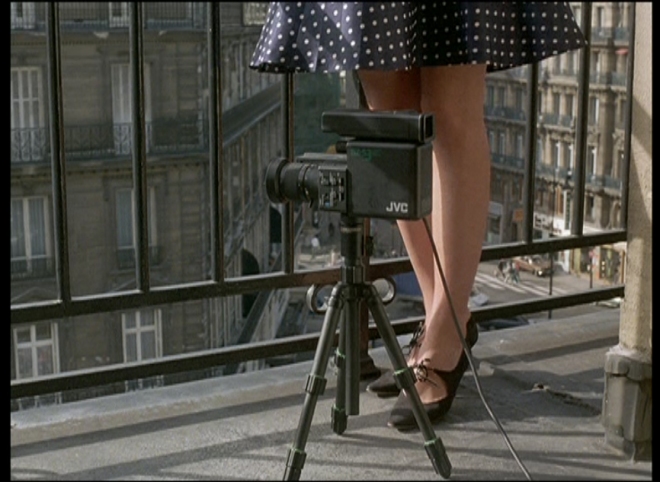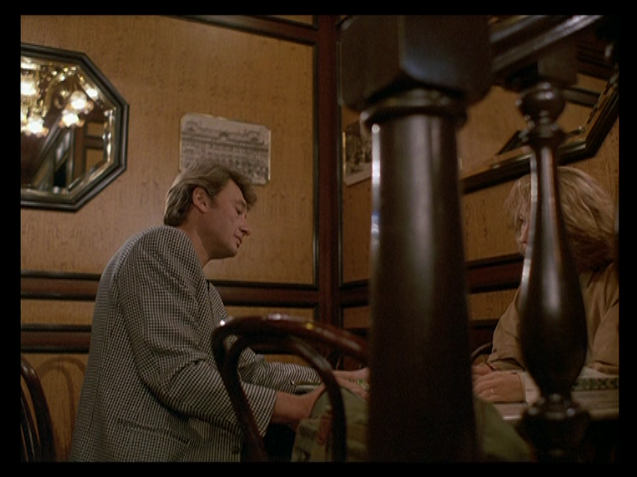In the previous sections I provided my characterisation of suspense. I held that uncertainty is integral to suspense. Whether in regard to a particular scene or a complete narrative uncertainty concerning how it will be resolved is essential to experiencing suspense. However, because I hold that suspense requires uncertainly I am threatened by the paradox of suspense. As I noted here, the paradox of suspense can be stated like this:
1. Suspense requires uncertainty.
2. Knowledge of the outcome of a narrative, scene or situation precludes any uncertainty
3. We feel suspense in response to fictions we know the outcome of
All of the individual elements are acceptable in isolation however; in conjunction they pose a problem for my account of suspense (because it holds that suspense requires uncertainty). To escape the paradox of suspense I will illustrate that knowledge of the outcome of a narrative, scene or situation does not necessarily preclude uncertainty. I will argue that the function and processes of our attention is responsible for this ability to become, momentarily, uncertain about a particular scene even if we have certain knowledge concerning how that scene turns out.
We are able to experience uncertainty in response to scenes, situations and narratives we know the outcome to because we do not (automatically) use prior knowledge (stored in our long term memory) when processing the information provided by a particular narrative. That is, when we are reading a suspense thriller we are not obliged to recall our knowledge of how a scene turns out. To establish whether we are obliged or not to recall specific information Richard J Gerrig conducted several experiments. These experiments attempted to gauge whether we do use prior information about former president George Washington when reading a short narrative about his life. In order to judge whether we are or are not obliged to access specific information about George Washington Gerrig introduced an obstacle to our comprehension of the well-known story of his acceptance of the role of first president of the USA. Gerrig explains:
In our experiments, we created small emendations to nonfictional aspects of American history and culture. We began with assertions that were selected to be unproblematic, such as George Washington was elected first president of the United States. We then wrote stories that presented obstacles to these well-known outcomes.[1]
The obstacle in the first experiment was changing the narrative to conclude that George Washington had rejected the presidency because he was too frail and that John Adams has become the first president. If we are obliged to utilize prior knowledge we have about George Washington then there should be no difference between the time needed to respond to questions by readers given the truthful story and those with the altered ending. The results of Gerrig’s experiments were staggering.[2] In some cases the altered stories produced an increase of nearly 50% in processing time required to answer the question correctly. Gerrig explains:
The results of this experiment indicate that uncertainty can be induced by immersing readers in story episodes. Verification latencies suggested that the subjects entertained the implied conclusions of the [narratives], even when they had information available in memory that directly contradicted these conclusions.[3]
Gerrig concluded that this evidence shows that there is ‘a limit on the way that prior knowledge is put to use in moment-by-moment understanding’.[4] That is, Gerrig’s experiment illustrates that we can be momentarily uncertain about outcomes or situations we have prior knowledge of because we do not automatically utilise prior knowledge of a scene (or situation or narrative) when processing the information provided by that scene. Gerrig’s experiments affirm then that it is quite possible to be uncertain about a scene, scenario or narrative even if we know how that particular scene, scenario or narrative turns out. What remains to be explained is why and how this natural ability comes about and how exactly it can explain features of our experience of repeat suspense. I will show that it is our attention which is responsible for our ability to become, momentarily, uncertain about a particular scene even if we have certain knowledge concerning how that scene turns out. That is, it is a feature of the way our attention works that we are able to (and do so frequently) prioritize processing new, important or vivid information over recalling previous encounters from the long-term memory. So, when we re-watch Die Hard we are not obliged to recall how particular scenes turn out with the consequence that we can experience uncertainty and ultimately suspense.

[1] Richard J Gerrig, ‘Suspense in the absence of Uncertainty’, Journal of Memory and Language, Vol. 28, No. 6, (December 1989), p. 633-648, p. 634.
[2] For brevity I will not copy the numbers created by Gerrig’s experiment though it is important to note that the difference in latency between true stories without obstacles (2.33 seconds) to stories that were false with obstacles (3.12 seconds) is a massive difference in response to a story with very little counter-factual information to process.
[3] Gerrig, ‘Suspense in the Absence of Uncertainty’, p. 639.
[4] Ibid, p. 645.

















